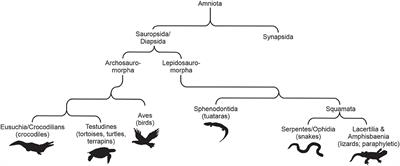REVIEW
Published on 19 Sep 2019
The Diversity and Adaptive Evolution of Visual Photopigments in Reptiles

doi 10.3389/fevo.2019.00352
- 9,779 views
- 17 citations
16k
Total downloads
130k
Total views and downloads
REVIEW
Published on 19 Sep 2019

REVIEW
Published on 27 Aug 2019

REVIEW
Published on 26 Apr 2017

REVIEW
Published on 11 Apr 2017

ORIGINAL RESEARCH
Published on 14 Nov 2016

REVIEW
Published on 30 Aug 2016

ORIGINAL RESEARCH
Published on 10 Jun 2016

ORIGINAL RESEARCH
Published on 29 Mar 2016

ORIGINAL RESEARCH
Published on 08 Mar 2016
